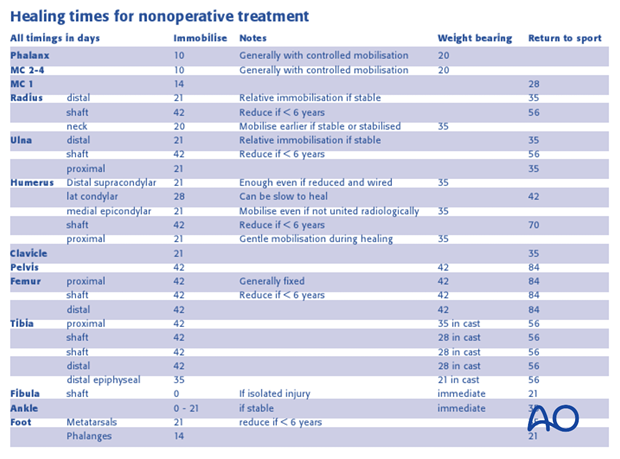Principles of nonoperative treatment of children’s fractures
1. Fracture Patterns
Children’s bones, especially in the younger age group, are more pliant and less brittle than adult bones.
Torus fractures
Bending forces can cause a child’s bone to crease on the compression (concave) side of the bend, leaving the tension cortex (convex) intact, but slightly bent.
This is known as a torus or buckle fracture. A torus is a doughnut-shaped mathematical figure.
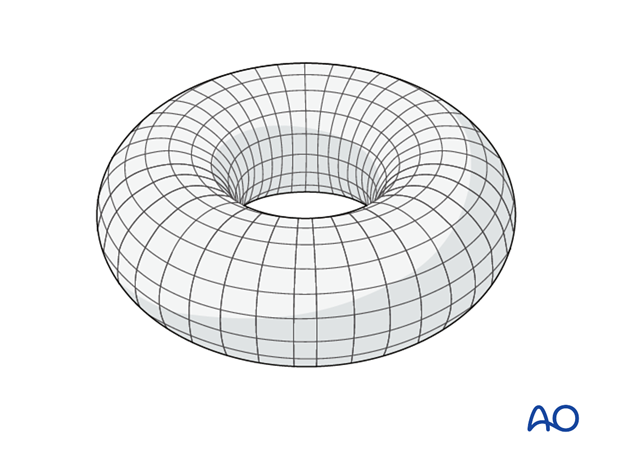
It is inherently stable (provided the tension cortex is unbroken), will usually model out any angulation over time, and usually requires only simple splintage.
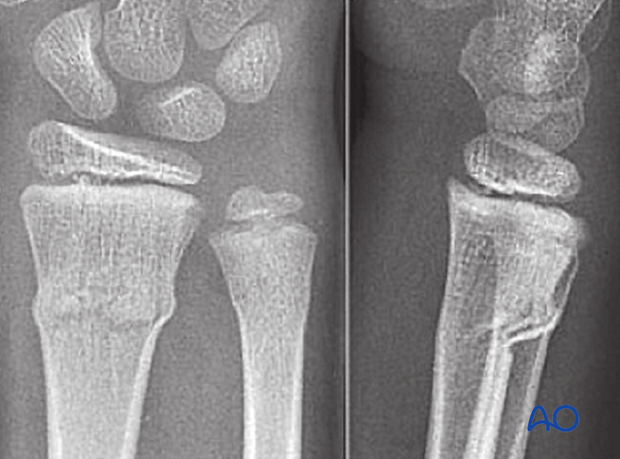
Greenstick fracture
If the tension cortex breaks, however, the fracture is inherently unstable and progressive angulation is to be expected. Reduction and three-point molding of a suitable cast are necessary.
Such fractures may be called greenstick fractures.
(Case courtesy of Dr Hani Salam, Radiopaedia.org)
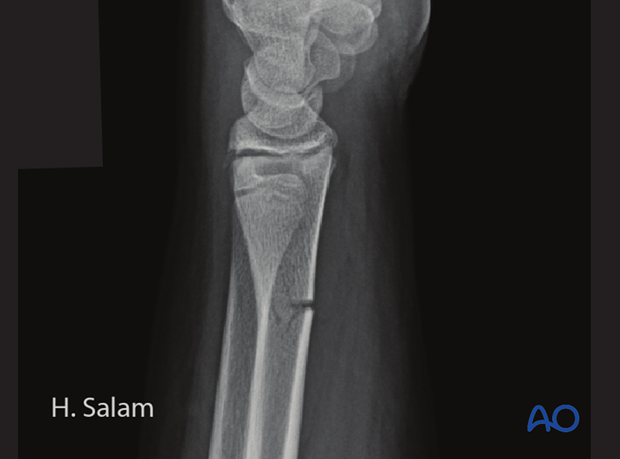
Plastic deformation
Diaphyseal injuries may not cause fracture, but may cause plastic deformation of the bone.
This usually occurs in the very young and, unless the deformity is excessive, the bone will model over time.
In this example, the ulna has a greenstick fracture, but the radius is plastically deformed.
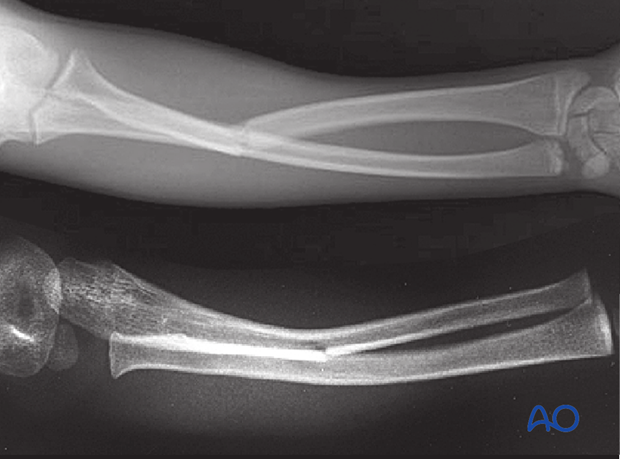
Occasionally intervention is needed, for example, a plastic deformation of the ulna associated with a radial head dislocation – Monteggia variant.
The star marks the centre of the capitellar ossific centre. The red line marks the normal border of the undeformed ulna.The white line marks the longitudinal axis of the radius - note that it passes anterior to the capitellar ossific centre.
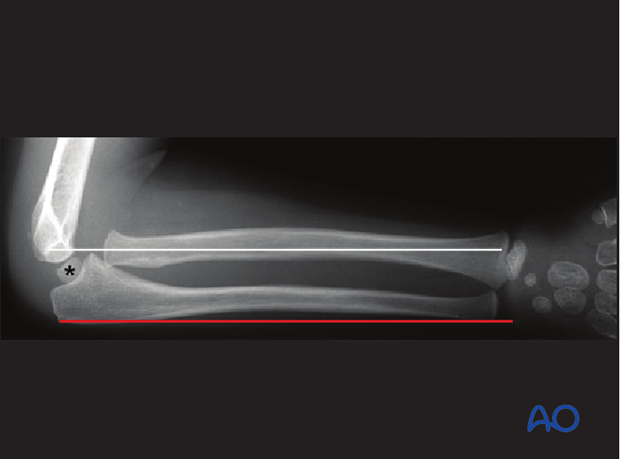
Growth plate injuries
Some displaced nonarticular growth plate injuries can be sufficiently unstable after reduction to require operative management. The direction of displacement, in relation to the expected plane of modelling, may also determine the need for surgical reduction and stabilization.
In certain regions, such as the knee, nonarticular physeal injuries can be associated with growth plate disturbance. A low threshold for operative intervention is prudent in these cases.
The nearer a child is to skeletal maturity, the time available to model is less and, therefore, less residual displacement can be accepted.
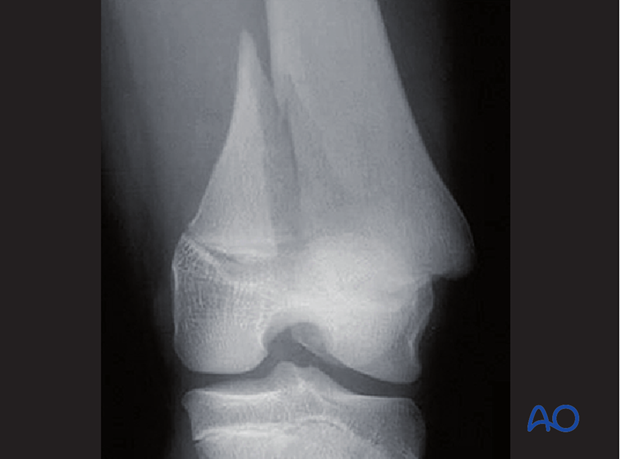
Intraarticular fractures in children are Salter-Harris types III and IV (E/3 and E/4) injuries.
Most displaced intraarticular epiphyseal injuries will require surgical reduction and stabilization, and are rarely suitable for nonoperative management.

More complex epiphyseal injuries, such as the distal tibial triplane fractures also present significant articular disruption.
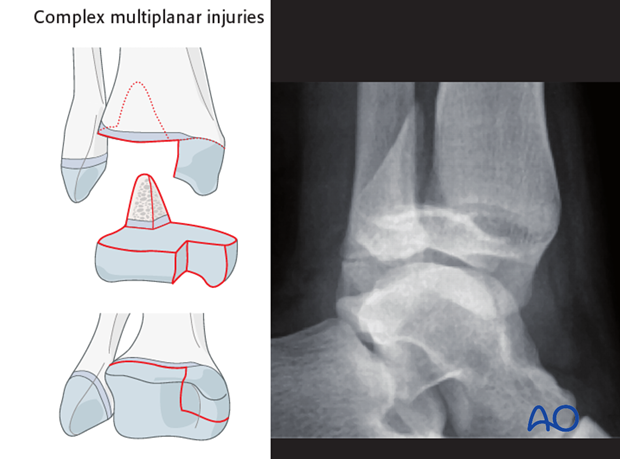
The association of other major injuries, especially in polytrauma, is likely to tip the balance of decision-making against nonoperative management.
2. Compartment syndrome
Muscle compartment syndrome is never treated nonoperatively, once the diagnosis is strongly suspected, or confirmed.
The reader is referred to the dedicated text on compartment syndrome and fasciotomy in the relevant regional modules.

3. Healing times for nonoperative treatment
A summary of average healing times for nonoperative treatment is presented in the table.
Download a reader friendly version here.
